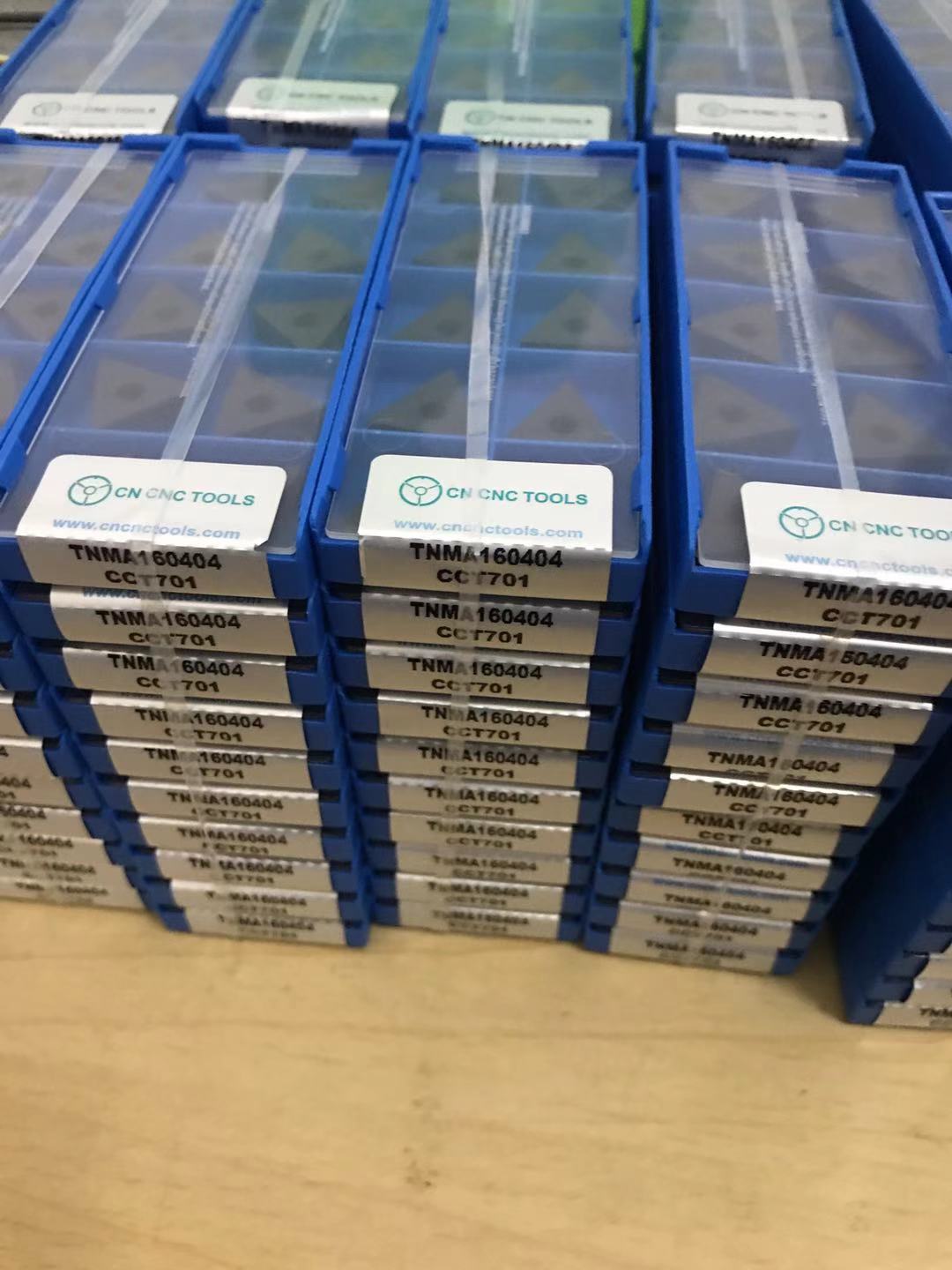Many people tend to overlook the important information reflected on the blade box when selecting a blade. Very often the information on the blade box will enable you to determine the workpiece material, Vc, Fn and Ap of the blade and thus select the right blade. For example, there are two main types of workpiece material reflected on the blade box: firstly, general purpose blades and secondly, specialised blades. Let's take a look below.

Some blade boxes are marked with P, M and K. These are general purpose blades and although the style of marking varies from company to company, they mean the same thing.
In addition to general purpose inserts, there are also specialised inserts, which are marked on the box with only one workpiece material.
For example, many people always confuse CBN inserts with PCD inserts for workpiece materials because PCD inserts contain the element C, as do ferrous metals such as steel and iron. So PCD is suitable for processing non-ferrous materials and can be mirror finished. Conversely processing ferrous metals will accelerate the wear of PCD.
The six letters P, M, K, N, S and H on the blade box, almost every blade box will have these letters on the logo, in the end what does it mean?
Although the style varies, each company represents six different groups of materials, which group of materials is indicated on the box, representing which type of workpiece material the blade is suitable for processing.
According to ISO standards, workpiece materials are divided into six main groups, each with its own unique characteristics in terms of machinability.
O P - Steel is the largest material group in the metal cutting sector and covers a wide range of materials from unalloyed steels to cast steel, high alloyed materials, ferritic and martensitic stainless steels. Steels usually have good machinability but can vary considerably depending on material hardness, carbon content etc.
ISO M - Stainless steel is an alloyed material containing at least 12% chromium and other alloys such as nickel and molybdenum. The different material states of ferritic, martensitic, austenitic and austenitic-ferritic (duplex) make stainless steel a wide range of material groups. Common to all these types is that the cutting edges generate a lot of heat during machining and are prone to groove wear and chip tumours.
ISO K - Unlike steel, cast iron is a short-chipping type of material. Grey cast iron (GCI) and malleable cast iron (MCI) are very easy to machine, while ductile iron (NCI), creep cast iron (CGI) and isothermally hardened ductile iron (ADI) are more difficult to machine. All cast irons contain silicon carbide (SiC), which can severely wear cutting edges.
ISO N - Non-ferrous metals are softer metals, such as aluminium, copper, brass, etc. Aluminium alloys with a silicon (Si) content of 13% are very abrasive. High cutting speeds and long tool life are often achieved with inserts with sharp cutting edges.
ISO S - High temperature alloys include many highly alloyed iron, nickel, cobalt and titanium based materials. They are viscous, generating chip tumours, work hardening and heat, and are very similar to the ISO M group, but are much harder to cut and therefore result in shorter cutting edge life.
Contact: Jacky Wang
Phone: +86 14714816052
Tel: +86 14714816052
Email: jacky@cncnctools.com
Add: Floor 1, Shixi Industrial area, Canton, Guangdong, China. 510288